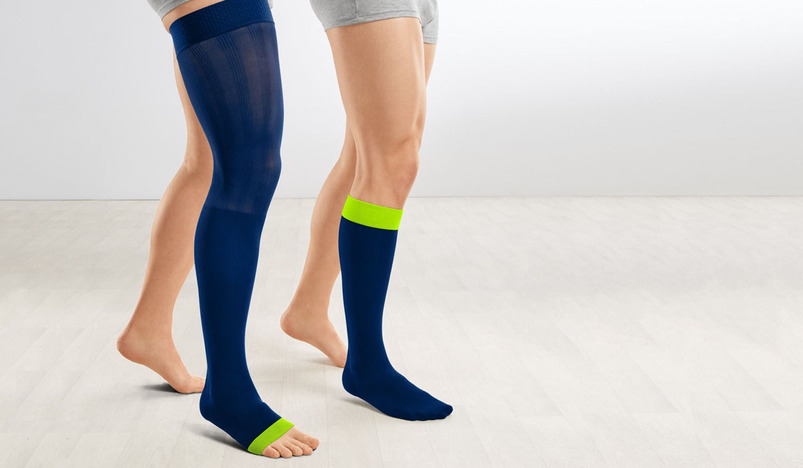
Compression Socks and Stockings for Compression Therapy
Compression socks and stockings apply gentle pressure to your legs and ankles, promoting blood flow from your legs to your heart. They can also reduce pain and swelling in your ankles and legs.
Benefits of compression socks
1. Boost circulation in your legs
2. Support veins
3. Prevent blood from pooling in your leg veins
4. Diminish leg swelling
5. Reduce orthostatic hypotension, which causes lightheadedness or unsteadiness when you stand
6. Help preventing venous ulcers
7. Prevent development of deep vein thrombosis in your legs
8. Help lessen the pain caused by varicose veins
9. Reverse venous hypertension
10. Improve lymphatic drainage
How do compression socks work?
Compression stockings apply pressure to your legs and ankles, which may:
- Reduce the diameter of major veins by increasing the volume and velocity of blood flow
- Help blood flow up toward the heart
- Help prevent blood from refluxing downward to the foot or laterally into superficial veins
Types of compression stockings
The three primary types of compression stockings are:
1. Graduated compression stockings
In graduated compression stockings, the level of compression is strongest at the ankle and gradually decreases towards the top. They’re designed for mobility and to meet certain length and strength medical specifications.
Graduated compression stockings typically require a professional fitting.
Stockings that end just below the knee help limit peripheral edema, or lower leg swelling due to fluid buildup.
Stockings that extend to the thigh or waist help reduce pooling of blood in the legs and help prevent orthostatic hypotension.
2. Anti-embolism stockings
Anti-embolism stockings reduce the possibility of deep vein thrombosis.
Like graduated stockings, they provide gradient compression. However, the level of compression differs. Anti-embolism stockings are designed for those who aren’t mobile.
3. Nonmedical support hosiery
Nonmedical support hosiery don’t typically require a prescription. They include elastic support hose and flight socks sold as potential relief for tired, aching legs.
These deliver uniform compression that exerts less pressure than prescription compression stockings.
You can find nonmedical compression stockings at most pharmacies or online.
Side effects of compression socks
If your doctor has prescribed compression stockings, check your legs daily for areas of skin changes, such as irritation or redness. These changes could indicate that:
- Your stockings don’t fit properly
- You’re not putting on or taking off your stockings properly
- You have an infection
- You’re allergic to the stocking material
It’s important to get a proper prescription and be sure to use compression stockings and socks properly.
Conclusion
Compression stockings apply pressure to your legs and ankles to promote blood flow from your lower extremities to your heart.
If your doctor prescribes compression stockings to help you with a condition such as venous insufficiency, remember to:
- Get fitted properly
- Follow instructions for properly putting on and removing them
- Follow all your doctor’s instructions, including when and how long to wear them
- Monitor any skin changes in the areas that come in contact with the stockings
.jpg)
Qatar Secures Place Among the World's Top 10 Wealthiest Nations
.jpg)
Hamad International Airport Witnesses Record Increase in Passenger Traffic

Saudi Arabia: Any visa holder can now perform Umrah

What are Qatar's Labour Laws on Annual Leave?
Leave a comment